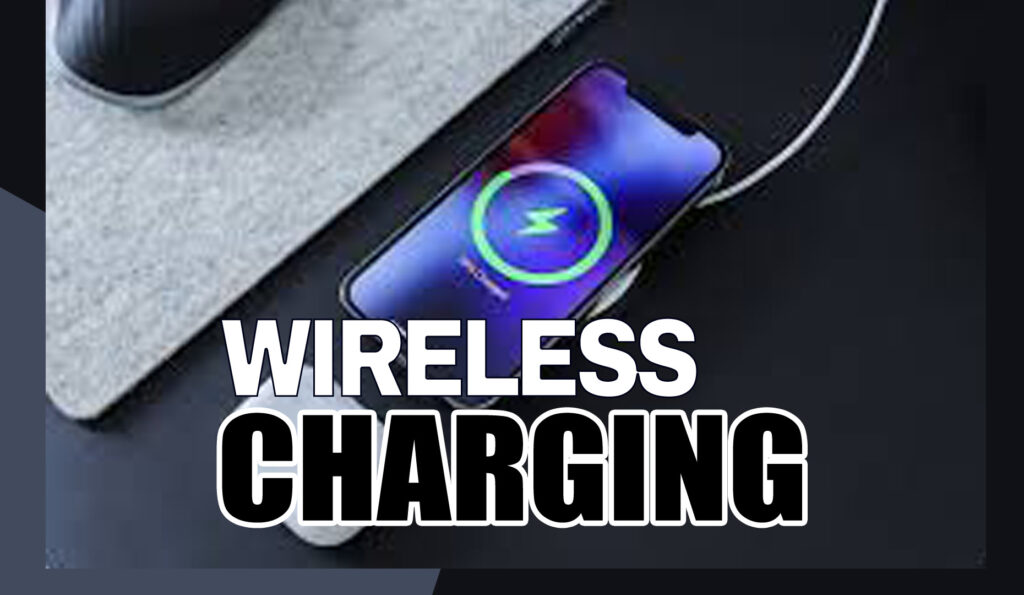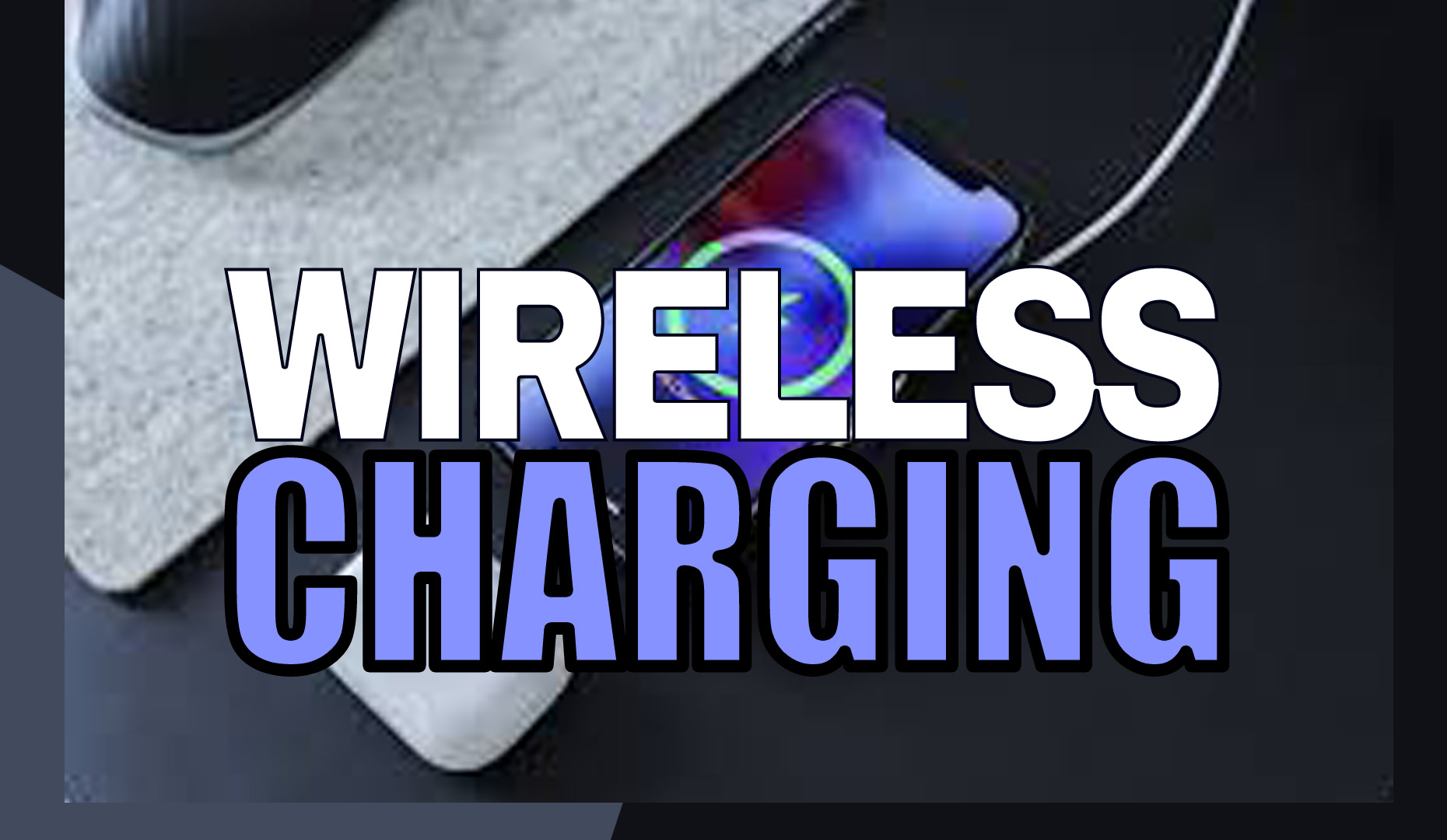Wireless Charging: The Future of Power

Wireless charging, also known as inductive charging, is a technology that enables charging of electronic devices without using cables. It is a game-changing technology that is revolutionizing the way we charge our devices. With the increasing popularity of wireless charging, it has become a crucial aspect of modern technology. In this article, we will explore the benefits and challenges of wireless charging, its applications, and its future prospects.
What is Wireless Charging?
Wireless charging is a technology that enables charging of electronic devices without using cables. It works on the principle of electromagnetic induction, which involves the transfer of energy between two objects through electromagnetic fields. The charging pad or mat is connected to a power source, which generates an electromagnetic field. The electronic device, equipped with a wireless charging receiver, is placed on the charging pad. The electromagnetic field generated by the charging pad induces an electric current in the receiver, which charges the battery.
Wireless charging technology is becoming increasingly popular due to its convenience, efficiency, and safety. It eliminates the need for cables, which can be messy and inconvenient. It also reduces the risk of electric shocks and short circuits. Furthermore, wireless charging is more efficient than traditional charging methods. It enables fast charging of electronic devices, saving time and improving productivity.
Benefits of Wireless Charging
- Convenience: One of the primary benefits of wireless charging is convenience. It eliminates the need for cables, which can be messy and inconvenient. With wireless charging, you can charge your electronic devices effortlessly, without having to worry about cables.
- Efficiency: Wireless charging is more efficient than traditional charging methods. It enables fast charging of electronic devices, saving time and improving productivity. Furthermore, wireless charging eliminates the need for multiple charging cables, which reduces clutter and saves space.
- Safety: Wireless charging is safer than traditional charging methods. It reduces the risk of electric shocks and short circuits, which can cause damage to electronic devices and harm individuals.
- Durability: Wireless charging is more durable than traditional charging cables. It eliminates the wear and tear associated with cables, which can lead to broken connectors and damaged wires.
Applications of Wireless Charging
Wireless charging technology has numerous applications in various industries. Here are some of the most popular applications of wireless charging:
- Consumer Electronics: Wireless charging is commonly used in smartphones, tablets, and smartwatches. Many leading smartphone manufacturers, such as Apple and Samsung, have integrated wireless charging into their products. This technology is also used in Bluetooth earphones and speakers.
- Automotive: Wireless charging is becoming increasingly popular in the automotive industry. It is used to charge electric vehicles, which are becoming more common as a sustainable alternative to traditional gasoline-powered vehicles.
- Healthcare: Wireless charging is used in medical devices, such as hearing aids and pacemakers. It eliminates the need for cables, which can be inconvenient and uncomfortable for patients.
- Industrial: Wireless charging is used in industrial equipment, such as automated guided vehicles (AGVs) and robots. It eliminates the need for manual charging, which saves time and improves productivity.
Challenges of Wireless Charging
Despite its numerous benefits, wireless charging has some challenges that need to be addressed. Here are some of the challenges of wireless charging:
- Cost: Wireless charging technology is still relatively expensive compared to traditional charging methods. This can be a barrier to adoption, especially for consumers who are price-sensitive.
- Efficiency: Although wireless charging is more efficient than traditional charging methods, it is still not as efficient as wired charging. This can be a concern for consumers who need to charge their devices quickly.
- Interoperability: Wireless charging standards are not yet standardized, which can create compatibility issues between different wireless charging devices. Consumers may need to purchase multiple charging pads or mats to charge different devices, which can be inconvenient and expensive.
- Range: The range of wireless charging is limited compared to traditional charging methods. The charging pad or mat needs to be in close proximity to the electronic device to charge it. This can be a concern for consumers who need to charge their devices from a distance.
Future Prospects of Wireless Charging
Despite the challenges, wireless charging has a promising future. Here are some of the future prospects of wireless charging:
- Standardization: The wireless charging industry is moving towards standardization. The Wireless Power Consortium (WPC) has developed the Qi standard, which is supported by many leading smartphone manufacturers. This standardization will enable interoperability and reduce compatibility issues.
- Advancements in Technology: Advancements in wireless charging technology are expected to improve efficiency and range. New technologies, such as resonant and magnetic resonance wireless charging, are being developed, which can charge devices from a distance.
- Integration in Public Spaces: Wireless charging is expected to become more integrated into public spaces, such as airports, coffee shops, and hotels. This will enable consumers to charge their devices while on the go, without having to carry charging cables.
Conclusion
Wireless charging is a game-changing technology that is revolutionizing the way we charge our electronic devices. It offers numerous benefits, such as convenience, efficiency, safety, and durability. Wireless charging has numerous applications in various industries, such as consumer electronics, automotive, healthcare, and industrial. Although wireless charging has some challenges, such as cost, efficiency, interoperability, and range, it has a promising future. Standardization, advancements in technology, and integration in public spaces are expected to drive the growth of the wireless charging industry in the coming years.
In conclusion, wireless charging is the future of power, and it is here to stay. As the technology advances and becomes more integrated into our daily lives, it will become an indispensable part of modern technology.
FAQS
1. Is wireless charging safe?
Ans. Yes wireless charging is safe.
2. What is wireless charging?
Ans. Wireless charging is a technology that allows you to charge your electronic devices without the need for physical cables or connectors. It uses electromagnetic fields to transfer power from a charging pad or mat to the device.
3. How does wireless charging work?
Ans. Wireless charging works through a process called electromagnetic induction. The charging pad or mat contains a coil that generates an electromagnetic field. The device being charged, such as a smartphone, also has a coil that receives the electromagnetic energy and converts it into electrical energy to charge the battery.
4. Which devices are compatible with wireless charging?
Ans. Many modern smartphones, smartwatches, and other portable electronic devices are compatible with wireless charging. However, not all devices support this feature. It’s important to check if your device is compatible before using wireless charging.
5. Do I need a special charger for wireless charging?
Ans. Yes, you will need a wireless charging pad or mat that is compatible with your device. These chargers come in various shapes and sizes and can be purchased from electronics stores or online retailers. It’s important to choose a charger that supports the specific wireless charging standard used by your device (e.g., Qi standard).
6. Is wireless charging slower than wired charging?
Ans. Wireless charging is generally slightly slower than wired charging. The charging speed may vary depending on factors such as the device’s battery capacity, the charger’s power output, and any additional features or technologies supported by the charger. However, advancements in wireless charging technology have led to faster charging speeds in recent years.
7. Can I use a wireless charger with a phone case?
Ans. In most cases, you can use a wireless charger with a phone case as long as the case is not too thick or made of materials that interfere with the wireless charging process. Metal cases, for example, may block the electromagnetic field and prevent effective charging. It’s recommended to use wireless chargers that are specifically designed to work with phone cases.
8. Is wireless charging safe?
Ans. Yes, wireless charging is generally considered safe. It is designed to meet international safety standards and includes features such as overheat protection and foreign object detection to ensure safe charging. However, it’s important to use reputable chargers from trusted manufacturers and follow the manufacturer’s instructions for proper usage.
9. Can I use wireless charging while using my device?
Ans. Yes, you can use your device while it is being wirelessly charged. Wireless charging allows for convenient charging while still being able to use your device for tasks such as making calls, browsing the internet, or watching videos. Just ensure that the device remains in contact with the charging pad or mat to maintain the charging connection.
10. Does wireless charging consume more energy?
Ans. Wireless charging can be slightly less efficient compared to wired charging, resulting in a small amount of energy loss during the charging process. However, the difference in energy consumption is generally minimal and not significant enough to cause a noticeable increase in electricity usage.
11. Can I use wireless charging with multiple devices simultaneously?
Ans. A10: Some wireless chargers support multiple device charging, allowing you to charge multiple compatible devices simultaneously. These chargers often have multiple charging coils or designated charging spots for each device. However, the charging speed may be affected when multiple devices are being charged simultaneously.
Please note that the answers provided here are general and may vary depending on the specific device and wireless charging technology being used.
Related Searches
